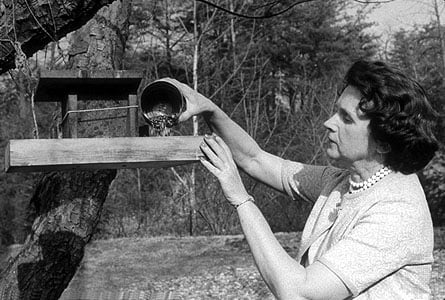Rachel Carson
By:
May 27, 2012

Like a lot of kids in my generation, I was raised in equal parts by my mother and my TV set; my mom worked for Fish & Game, my favorite show was Captain Planet. If RACHEL CARSON (1907–64) had never penned Silent Spring, neither of those childhood constants would have been present in my life. After spending her early career in the U.S. Bureau of Fisheries (and writing one book that sold poorly), Carson launched onto the New York Times Best Seller List in 1951 with The Sea Around Us, a poetic look at marine biology that remained a bestseller for 86 weeks and garnered her a National Book Award. Shortly after that, she moved to Maine to live with her mother. There, Carson met Dorothy Freeman. The nature of the relationship between the two women has been the subject of much speculation, but one thing is clear: Carson had found a true intellectual and spiritual equal, someone she would correspond with for the remainder of her life. Carson’s most enduring legacy is 1962’s Silent Spring, which is credited with being the rallying point that led to the nationwide ban on DDT and other pesticides, substances that were causing both illness in people and damaging the ecosystem. In an post-war landscape where it seemed that America’s captains of industry could do no wrong, Carson was able to plant a seed of doubt about the price of progress. She died two years after the book was published, and never lived to see an era in American history where green products lined store shelves and hybrid vehicles roamed the streets.
***
On his or her birthday, HiLobrow irregularly pays tribute to one of our high-, low-, no-, or hilobrow heroes. Also born this date: Vincent Price, John Barth, and Dashiell Hammett.
READ MORE about members of the Partisans Generation (1904-13).
